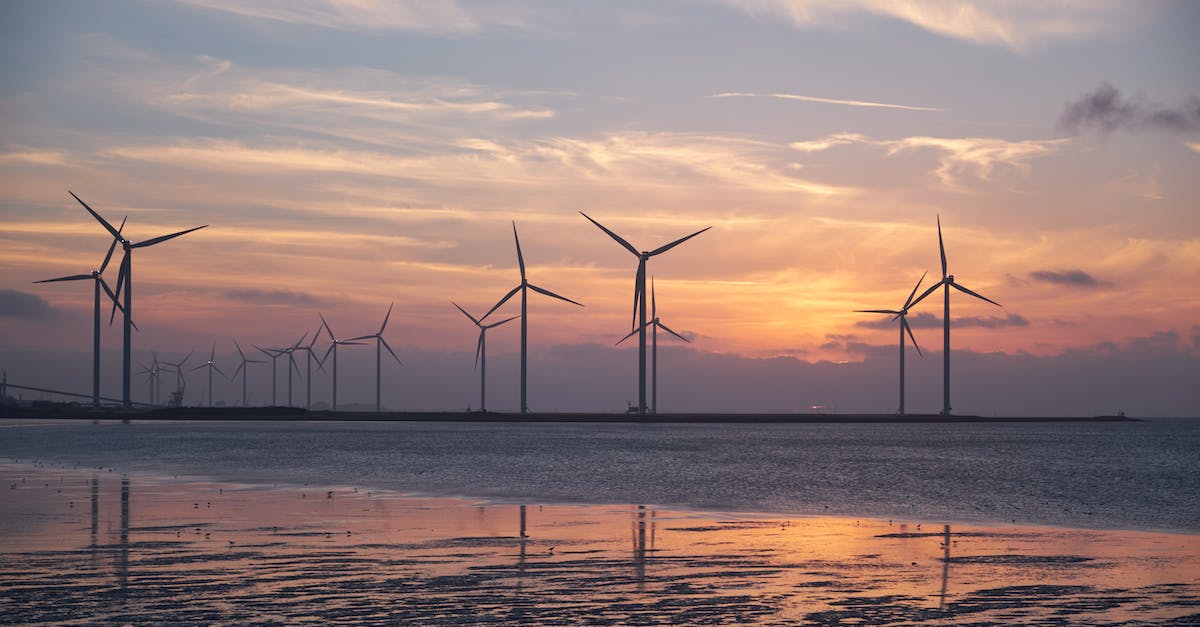If you’re anything like me, you’re always looking for ways to create a more sustainable world. And while plenty of big-picture solutions are out there, we can also make a difference on the individual level by building green. Here are five essential strategies for green building that can help make a big difference in our environment.
First, use natural and sustainable materials when building your structure. This can include using recycled wood and stone and avoiding materials that require a lot of energy to manufacture. Second, look for ways to reduce the energy used by your building. This can be accomplished through insulation, energy-efficient lighting, and solar panels. Third, consider the water requirements of the building. Look for ways to reduce water usages, such as installing low-flow fixtures and water-efficient appliances. Fourth, look for ways to reduce waste. This can be done through smart design, efficient building processes, and a commitment to reuse and recycle materials. Finally, be sure to incorporate outdoor spaces into your design. Not only does this help to create a more pleasant environment, but it also helps reduce the need for additional energy-consuming structures.
If you want to reduce your environmental footprint and do your part in protecting our planet, then green building is a great place to start.
So let’s get to it and explore these five essential strategies for green building!
Definition of Green Building

Are you looking for ways to help the environment and reduce your carbon footprint? Green building is one of the best ways to do so! Green building is a process of designing and constructing buildings that are environmentally responsible and resource-efficient throughout the building’s life cycle. It focuses on reducing the negative environmental impacts of buildings while increasing its ability to provide comfortable and healthy living and working conditions.
Green building includes the use of materials and resources that are renewable, recyclable, and locally sourced, as well as energy-efficient systems and technologies. It also includes design principles such as natural lighting and ventilation, the use of recycled and renewable materials, and the use of water-conserving fixtures. Green building also focuses on making buildings more energy-efficient and reducing their environmental impact.
Green buildings can help reduce energy costs, improve living and working conditions, reduce waste and pollution, and help protect the environment. It is an important part of sustainability and can help create a healthier, more efficient, and greener future.
Benefits of Green Building

You know you should go green, but why? Green building offers several advantages, so let’s have a look at a few of them!
-

Fashionably Green and On-The-Go
£16.50 Select options This product has multiple variants. The options may be chosen on the product page -

Reusable and Ready Eco-Friendly Tote Bag
£16.50 Add to cart
First and foremost, green building is beneficial for the environment. It reduces carbon emissions, conserves natural resources, and helps to reduce waste. You can be sure that your building is helping to protect the planet for generations to come.
Green building also reduces energy costs. By utilizing energy-efficient appliances and materials, you can save money on your utility bills. Plus, you can take advantage of tax credits and other incentives for building green.
It’s also great for your health. Green buildings are designed to improve air quality, reduce noise pollution, and create healthier indoor spaces. Plus, you can take advantage of natural light and materials that can improve your mood and reduce stress.
Finally, green building can be good for the economy. It can create jobs, attract investments, and stimulate local businesses. Plus, green building can help to create a more sustainable future for everyone.
These are just a few of the benefits of green building. So, why not take the plunge and start building green today?
Strategies for Sustainable Construction

Are you looking for ways to make your construction projects more sustainable? Here are three strategies that you can use to make your construction projects more environmentally friendly.
- Choose Sustainable Materials When building, be sure to choose materials that are environmentally friendly. Consider using recycled materials or materials that have been harvested in a sustainable manner. Recycled materials can save energy and resources, while sustainably harvested materials help to protect the environment.
- Reduce Waste and Pollution Make sure to limit the amount of waste and pollution created during construction. Try to reduce the amount of energy and water used during the construction process. This can be done by using materials that are more efficient, and by reducing the number of chemicals used in the construction process.
- Incorporate Renewable Energy Incorporating renewable energy sources into your construction project can help reduce your environmental impact. Consider installing solar panels on the roof of your building or using wind turbines to generate electricity. These renewable energy sources can help reduce your reliance on traditional energy sources and reduce your environmental impact.
By following these strategies, you can ensure that your construction project is as sustainable and environmentally friendly as possible.
Strategies for Improving Building Efficiency

You’re already on your way to becoming an eco-warrior for green building with your commitment to sustainability! To take your green building strategy to the next level, here are four essential strategies for improving energy efficiency:
- Invest in energy-efficient appliances and materials. One of the easiest and most effective ways to improve the efficiency of a building is to invest in energy-efficient appliances and materials. Look for Energy Star-certified appliances and materials to reduce your energy consumption and save money.
- Use natural light whenever possible. By installing windows and skylights, you can reduce the amount of artificial light needed in a building and maximize the use of natural light. You can also use light-sensing technology to adjust the amount of light in a room depending on the time of day.
- Install insulation. Proper insulation is essential for keeping a building’s energy costs low. Make sure that the walls and ceilings of the building are adequately insulated to keep heat from escaping and reduce energy waste.
- Update your HVAC system. An outdated HVAC system will not only be less efficient, but it could also be costing you money. Investing in an energy-efficient HVAC system will help you save money on your energy bills and reduce your carbon footprint.
These four strategies are essential for creating a more energy-efficient building and helping to reduce your environmental impact. So commit to green building today and start making a difference!
Strategies for Reducing Building Waste

Hey there, you! If you’re dedicated to saving the environment, reducing building waste is an essential part of the green building process. Here are five essential strategies to help you reduce building waste:
- Reuse or recycle existing materials whenever possible. Repurpose materials that may otherwise be thrown away. For instance, you could use old wood panels as flooring or insulation in a new project.
- Rely on digital solutions to reduce paper waste. Invest in digital solutions like cloud storage, or digital document management systems, to save time and reduce paper consumption.
- Choose green building materials like recycled or recyclable materials. There are many materials that can be recycled or reused in new projects, such as steel, aluminum, and some plastic and glass products.
- Minimize the number of construction vehicles used in the building process. Use fewer vehicles, and use ones that are more efficient and emit fewer pollutants.
- Recycle any construction waste that is generated during the building process. Make sure all waste is sorted and disposed of properly, and use any recyclable materials in new projects.
By following these strategies, you’ll be able to reduce building waste and help save the environment!
Strategies for Incorporating Renewable Energy

Are you looking for ways to incorporate renewable energy into your green building? Then you’ve come to the right place! Here are some essential strategies to get you started:
- Understand Your Options: The first step in incorporating renewable energy into your green building is to understand the different options available. From solar and wind power to hydroelectric and geothermal energy, there are plenty of choices. Research each energy source to determine which is most suitable for your building.
- Conduct an Energy Audit: Before you begin incorporating renewable energy, it’s a good idea to conduct an energy audit to determine the current energy consumption of your building. This can help you identify areas where energy can be saved and get a better idea of how much renewable energy you need to offset your current usage.
- Invest in Solar Panels: Solar energy is one of the most popular forms of renewable energy and can be an excellent choice for green buildings. Solar panels can be installed on rooftops or other suitable locations to capture solar energy and convert it into electricity.
- Install Wind Turbines: Wind turbines are another great way to generate electricity from renewable sources. They can be installed on rooftops or in open fields and provide a reliable source of power.
- Harness Geothermal Energy: Geothermal energy is another renewable energy source that can be used to provide heating and cooling for green buildings. Geothermal energy is obtained from the earth’s natural heat and can be used to generate electricity and provide hot water.
- Optimize Your Building Design: Incorporating renewable energy into green buildings isn’t just about installing solar panels or wind turbines. You can also optimize the design of your building to maximize energy efficiency. This includes things like making sure windows are properly insulated and installing double-glazed windows to reduce heat loss.
Strategies for Selecting Healthy Building Materials

Are you building a green home? If so, then you’re already doing a great job! But there’s one important step you can’t forget: selecting healthy building materials. Here are a few tips to keep in mind:
- Know Your Sources. When it comes to building materials, you want to make sure you’re getting the best of the best. Check out manufacturer websites and read reviews to get a better idea of what you’re getting.
- Reduce, Reuse, Recycle. This philosophy applies to building materials, too! Look for materials made from recycled or reclaimed materials. You can often find great items at local thrift stores and salvage yards.
- Do Your Research. Make sure to research the materials you’re using to make sure they’re safe and non-toxic. Pay special attention to paints, finishes, and other chemical products.
- Check the Labels. When you’re shopping for building materials, look for labels that tell you what the materials are made of. This can help you make sure you’re getting the right product for the job.
- Go Natural. Natural materials like wood, stone, and bamboo are great options for green building. They’re eco-friendly and can be just as durable as other materials.
- Test it Out. If you’re still not sure, it’s a good idea to test out the materials before you buy them. Try out a sample and make sure it works for your project.
- Choose Quality. If you’re looking for the most eco-friendly option, you’ll want to make sure you’re choosing quality materials that will last. Investing in high-quality, durable materials can save you money in the long run.
Conclusion
As you can see, green building is a smart way to create more sustainable and energy-efficient structures. Not only is it good for the environment, but it also saves you a lot of money in the long run!
These five essential strategies for green building will help you get started on your journey to create a more sustainable, energy-efficient structure. It doesn’t have to be difficult or expensive to start making a difference. By following these strategies, you can get started on making a positive impact on the environment today.
So, what are you waiting for? Get started now! Take advantage of these five essential strategies for green building and start making a difference. The planet will thank you for it!
References:
https://www.builderonline.com/design/building-materials/5-essential-strategies-for-green-building_o

